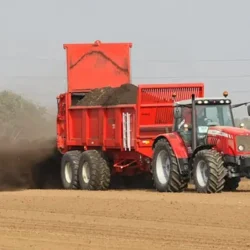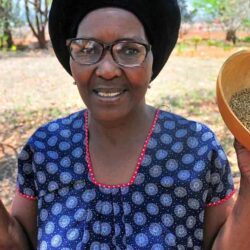The agriculture sector is not powerless when it comes to climate change. Daneel Rossouw, head of sales for agriculture at Nedbank Commercial Banking, explains to us the concept of Conservation Agriculture, and how the agriculture sector can implement it.
How does Conservation Agriculture (CA) mitigate the impacts of climate change?
The three key elements of conservation agriculture are minimum soil disturbance, crop diversification, and permanent soil cover.
Because conservation agriculture not only reduces greenhouse gas concentrations in the atmosphere but also makes land more resilient to climate-related events such as long droughts and heavy downpours, it is doubly valuable in a warming world.
These practices reduce both the impacts of climate change on agricultural systems and the contribution of agricultural practices to greenhouse gas (GHG) emissions through sustainable land management.
CA contributes to protecting the soil from erosion and degradation, improving soil quality and biodiversity and natural biological processes above and below the ground surface, preserving natural resources such as water and nutrients, and increasing their use efficiency, while optimising crop yields.
How expensive is it to start practising Conservation Agriculture? What adjustments need to be made?
The optimal way to start practising CA is to first correct all deficiencies in your soil and negate all possible compacted layers.
Unfortunately, the machinery required for this process is expensive but can be rented and is readily available. This is the only expensive item associated with implementing CA as most conventional farms already have the other heavy machinery required, such as tractors and harvesters.
So, the switch is not capital intensive, but it is management intensive, which means that farmers need to be prepared to be actively involved on the farm.
However, it’s important to offset any initial costs, or extra time and effort required to manage the farm against the cost savings this type of farming delivers, such as water, fertilisers, pesticides and machinery, and higher yields, which all help to achieve higher profitability in the long run.
Can you give an example of this?
In a study done in conjunction with the Western Cape Department of Agriculture and published in 2023, wheat production at Langgewens and Tygerhoek research farms was studied from 2002 to 2020 to estimate the environmental and economic impacts of switching from conventional wheat production to CA’s zero tillage (zero-till) and no-tillage (no-till) systems.
The results indicate that CA is more profitable and has a higher environmental efficiency than conventional tillage wheat production. In Langgewens, zero-till and no-till are respectively 113% and 55% more efficient than conventional tillage when comparing the environmental impact of producing one kg of wheat.
Findings also suggest that, compared to 100% conventional tillage wheat production, the adoption of CA systems has led to reductions in environmental damage valued between R269,2-million and R402,5-million in the Western Cape.
Is Conservation Agriculture widely practiced in South Africa?
According to the latest FAO research (2021), 25% of South Africa’s crop area is being farmed under conservation agriculture principles. Adoption is highest in the Western Cape at 51%, followed by KZN at 38% and North West at 37%.
In the Western Cape, wheat in rotation with legumes is the primary winter cropping system found under CA, while in the rest of South Africa, CA’s major field crops range from maize, soybean and sunflowers to pastures.
While adoption of CA has been relatively slow in Africa, the area under CA production on the continent increased by 547,8% from 2016 to 2019 and by 366% in South Africa.




